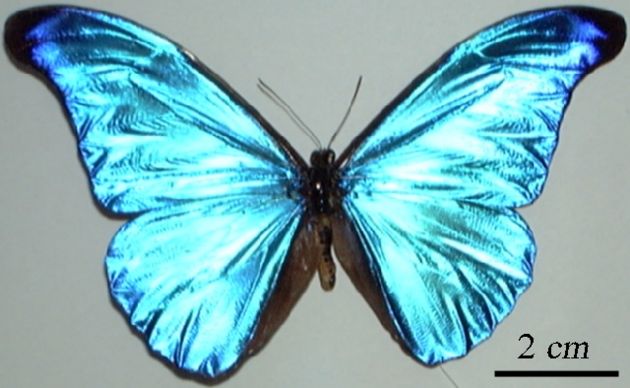Color E-readers Inspired by Butterflies

Full-color displays for e-readers could really take off soon — on the wings of butterflies.
Qualcomm MEMS Technologies new Mirasol is the first full color, video-capable display on a prototype e-reader. Built on the concept of the iridescence of a butterfly’s wing, the new technology reflects light rather than transmitting light the way LCD screens do.
The display is readable in sunlight and offers unprecedented energy savings for longer battery life. E-readers may just be the beginning for Mirasol displays as consumers seek color in every device they use, better visibility in bright light, and days or even weeks worth of battery life.
Inspiration
The inspiration for Mirasol’s engineering came from nature’s most vividly colored creatures: the cerulean wing of a butterfly, the ruby throat of a hummingbird, and the rainbow flash of a tropical fish. The branch of science devoted to the study of technology imitating nature is known as biomimetics. It gave us Velcro, which was invented in 1948 by Swiss chemist George de Mestral, who mimicked the way burrs stuck in his dog’s coat.
Velcro may be one of the few recognizable brand names to come out of biomimetics, but that may be about to change.
“Looking at pretty structures in nature is not sufficient,” said MIT chemical engineer Robert Cohen. “What I want to know is, can we actually transform these structures into an embodiment with true utility in the real world?” Qualcomm engineers say, yes we can.
Get the world’s most fascinating discoveries delivered straight to your inbox.
A closer look at the mechanics of natural iridescence reveals a common structure across many species — layers of microscopic crystals in insect wings, bird feathers and fish scales. The crystals reflect light at different angles, causing light waves to interfere with one another, which we see as changing or iridescent colors. Scientists call it structural color, as opposed to color by pigmentation.
Mirasol technology, formally known as interferometric modulation (IMOD), uses electrically charged, tiny flexible membranes overlaid onto a mirrored surface to imitate the reflective properties of biological crystals. Light reflected back out through those membranes is refracted so that interfering wavelengths create colors. Like a butterfly on a sunny afternoon, Mirasol reflective displays can be easily seen in bright light.
Better performance
Mirasol displays require virtually no illumination or backlighting, a power sucking requirement of LCD screens, resulting in significant energy savings. Pike Research estimates that IMOD displays consume 33.7 percent less energy and emit 94 percent less carbon dioxide equivalents while active than an LCD display of the same dimensions.
The Qualcomm e-reader prototype made by Foxlink caught media attention for its obvious advantages over available e-readers like Amazon’s Kindle and the Barnes & Noble Nook. “The displays use ambient light in order to create colour,” said marketing director Cheryl Goodman at Qualcomm MEMS Technologies. “It is a nature-based design and it is a significant innovation that no one has done before.”
Qualcomm claims Mirasol displays have approximately the same contrast ratio and reflectivity as a newspaper, making it easy to real in most any lighting situation.
Yet unlike black and white e-ink displays, Mirasol’s full color and fast response time allow a Mirasol-equipped e-reader to double as a media player for video and games. Viewing video on an ordinary device can quickly drain the battery, but Mirasol’s video capabilities require no sacrifice in battery life. Qualcomm estimates battery life in days, not hours. Easy to read in more places, extended battery life and multi-function make Mirasol a category driver for e-readers, but Qualcomm envisions a much wider application of its technology.
Without the need for backlighting, Mirasol displays can be even thinner and lighter than their LCD counterparts. Look for not only thinner e-readers, but even thinner versions of digital cameras, cell phones, gaming devices, and GPS units. According to Qualcomm, the technology is scalable and can be adapted to larger applications such as TVs and outdoor digital signs.
Qualcomm says Mirasol Color Video e-book readers will ship late 2010. Hardware partners will be announced in the first part of 2011.
- 10 Profound Innovations Ahead
- Ancient Bird Feathers Had Iridescent Glow
- E-reader Reviews
This article was provided by TopTenREVIEWS.



